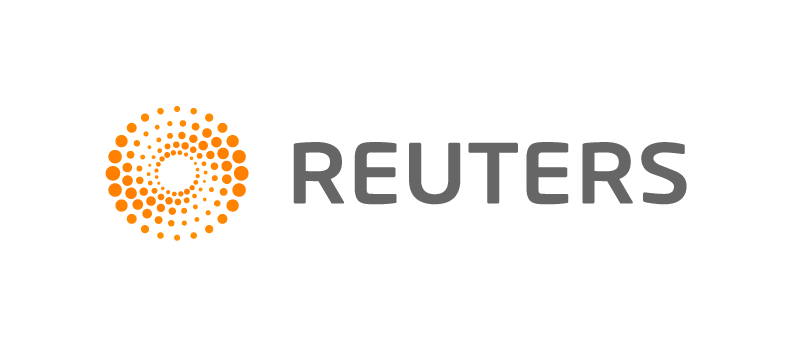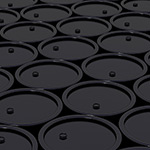Exxon, Shell's Spending Patterns May Help Them Through Oil Price Drop


LONDON, March 10 (Reuters) - The world's two biggest oil firms, Exxon Mobil Corp and Royal Dutch Shell, may withstand the oil price collapse better than their rivals because they are closer to finishing expensive investment projects while others must keep spending.
The near halving of oil prices since June is likely to send all the biggest listed oil companies into negative cash flow this year, and has sparked a rush to cut costs across the sector as a result. But depending on where they are in their spending cycles, some companies are finding those cuts easier to make than others.
"Both (Exxon and Shell) had already entered a lower spending phase, with major projects reaching completion and coming on stream over the next two years," Moody's rating company said in a report.
Exxon started eight major oil and gas production projects last year in locations ranging from Papua New Guinea to the Gulf of Mexico and Abu Dhabi.
Shell started four big production start-ups last year in the Cardamom and Mars B oil fields in the Gulf of Mexico as well as other oil fields in Nigeria and Malaysia.
As a result Exxon, the world's biggest publicly traded oil company, was able to cut its 2015 project spending by 11 percent to around $34 billion without significant impact on its production. Shell, the second-largest, opted for a $15 billion cut over the next three years and maintained its 2015 capital spending at $35 billion which will also not affect its output.
Chevron and Total, on the other hand, are both in the midst of large project spending cycles, and will have to tap into more debt in order to stay afloat, Moody's said.
Elsewhere BP, despite cutting costs and jobs and freezing salaries, still faces sizeable outgoings related to its 2010 Gulf of Mexico oil spill fine and its stake in Russian oil champion Rosneft.
Most big oil firms announced cuts of 10 to 15 percent to their 2015 budgets versus last year. Some suspended share buybacks, revived dividend payment via company stock, known as scrip shares, and maintained dividends flat in order to boost cashflows.
While all companies are expected to keep paying high dividends by increasing borrowing, Anglo-Dutch Shell and Texas-based Exxon appear to be most able to cover both spending and dividend payouts if oil prices stay at their current $60 a barrel.
They are also likely to be able to pick up bargain assets, while the price collapse shakes the sector out.
"Those who have stronger balance sheets would be able to acquire more assets in the downturn, for example distressed and cheap U.S. shale producers," said Kirill Pyshkin who helps manage over $400 million in global and U.S. equity funds at Mirabaud Asset Management in London, including shares in Shell.
Pyshkin noted too: "If oil prices recover they won't have to sacrifice their growth budgets and hence will be growing faster than peers in future."
Lower Breakeven
Exxon and Shell also lead the rest of the pack in terms of where their cashflow breaks even. They can survive on a much lower price of oil to cover project spending, operating costs and dividend payments.
According to analysts at Jefferies, Shell and Exxon both have 2015 breakevens of around $75 to $80 a barrel.
While that's still significantly higher than the average 2015 Brent price of around $56 a barrel, it's healthier than Chevron, BP and Eni's breakevens which Jefferies forecast at around $95, $100 and $120 a barrel respectively.
For some however, while Exxon is a safe investment, its dividend is relatively low compared to its peers and its shares offer little upside because of the steady course the firm is now on. Other peers and smaller companies offer better returns.
"Although it (Exxon) retains significant defensive strengths should oil prices dip again, we think the market is now beginning to deploy its investment dollars in higher risk plays," BMO Capital Markets analyst Iain Reid wrote in a note to investors.
Reid's key pick is Shell, which still has "plenty of firepower to deliver further upside via more aggressive restructuring". Total, which is further behind in the spending cycle may however also offer higher returns for investors in the future, Reid added.
According to Reuters data, 15 out of 23 polled analysts are neutral on Exxon shares, while 5 rate it a "buy". Shell is more attractive for analysts, with 10 out of 20 recommending a "buy" and 9 a "hold".
Total remains the most robust stock, with 17 "buy", 16 "hold and 2 "sell" recommendation.
Borrowing Up
All of the big oil firms are expected to see negative cash flows this year, according to Moody's, and will turn to borrowing in order to cover costs.
All have indicated they would have no problem increasing borrowing this year, given their debt-to-equity ratios below 20 percent.
"The majors with their AA and AAA ratings still have access to attractive sources of funding. Their balance sheets have the capacity to absorb one or two years of low prices," said Wood Mackenzie analyst Tom Ellacott.
(Additional reporting by Claire Milhench; Editing by Sophie Walker)
WHAT DO YOU THINK?
Generated by readers, the comments included herein do not reflect the views and opinions of Rigzone. All comments are subject to editorial review. Off-topic, inappropriate or insulting comments will be removed.
- Weatherford CEO's Rebound Plan Relies On Getting Smaller
- Iran Says Oil Market Is Too Tight For US Zero Exports Target
- China's Squeezed 'Teapots' Eye Petchem Path To Riches
- Baker Hughes: US Drillers Add Oil Rigs For Second Week In Three
- Venezuela Hands China More Oil Presence, But No Mention Of New Funds
- What's Next for Oil? Analysts Weigh In After Iran's Attack
- Venezuela Authorities Arrest Two Senior Energy Officials
- CNOOC Bags Contract for 4.6 MMcf of LNG for Philippines
- EIA Raises WTI Oil Price Forecasts
- EU Gas Storage Nearly 60 Percent Full at End of Heating Season
- ExxonMobil Makes FID on 6th Project in Contested Guyana Asset
- Is The Iran Nuclear Deal Revival Project Dead?
- ORE Catapult Looks for New CEO as Jamieson Steps Down
- Japan's Mizuho Invests $3.64MM in Bison's CCS Project in Alberta
- Equinor Advances First Battery Storage Projects in USA
- Macquarie Strategists Warn of Large Oil Price Correction
- JPMorgan CEO Says LNG Projects Delayed Mainly for Political Reasons
- USA, Venezuela Secretly Meet in Mexico as Oil Sanctions Deadline Nears
- EIA Ups Brent Oil Price Forecast for 2024 and 2025
- Petrobras Discovers Oil in Potiguar Basin
- EIR Says Oil Demand Will Not Peak Before 2030
- Biden Plans Sweeping Effort to Block Arctic Oil Drilling
- Pantheon Upgrades Kodiak Estimates to 1.2 Billion Barrels
- Dryad Flags Red Sea 'Electronic Warfare' Alert
- Russian Oil Is Once Again Trading Far Above the G-7 Price Cap Everywhere
- Oil and Gas Executives Predict WTI Oil Price
- New China Climate Chief Says Fossil Fuels Must Keep a Role
- Chinese Mega Company Makes Another Major Oilfield Discovery
- Oil and Gas Execs Reveal Where They See Henry Hub Price Heading
- Equinor Makes Discovery in North Sea
- ExxonMobil Racks Up Discoveries in Guyana Block Eyed by Chevron
- Macquarie Strategists Warn of Large Oil Price Correction
- DOI Announces Proposal for Second GOM Offshore Wind Auction
- Standard Chartered Reiterates $94 Brent Call
- Chevron, Hess Confident Embattled Merger Will Close Mid-2024







